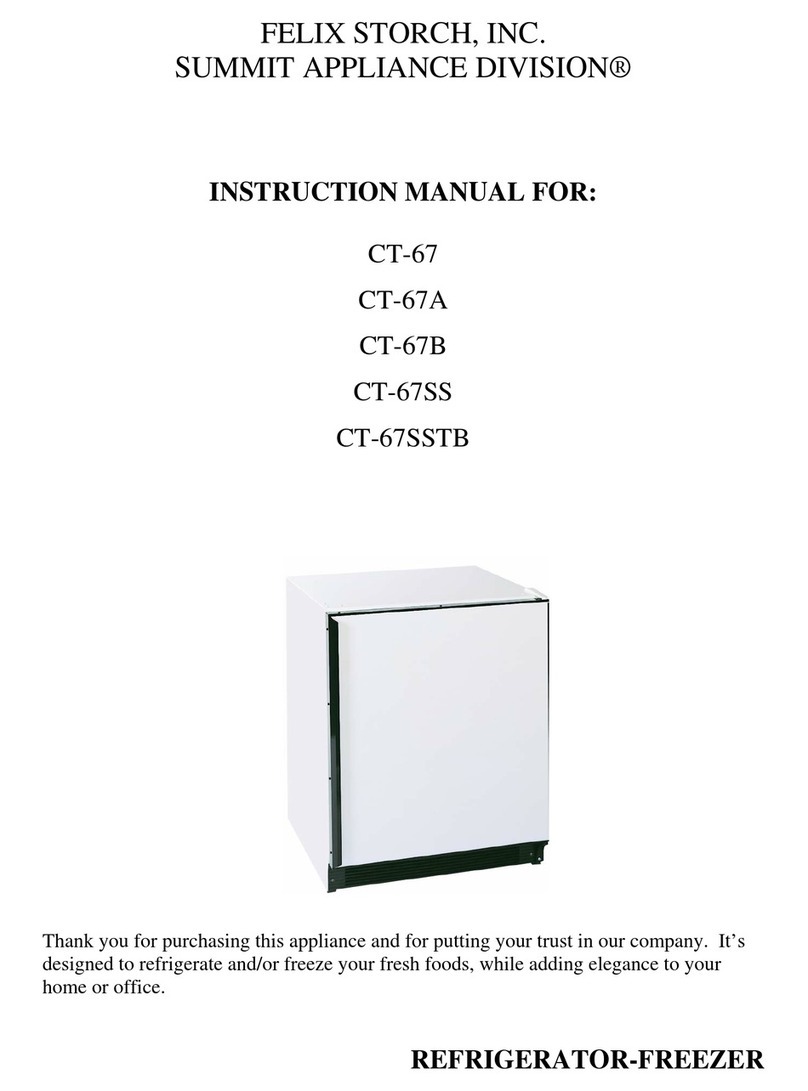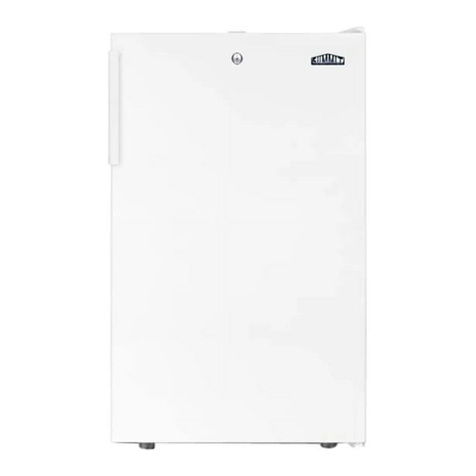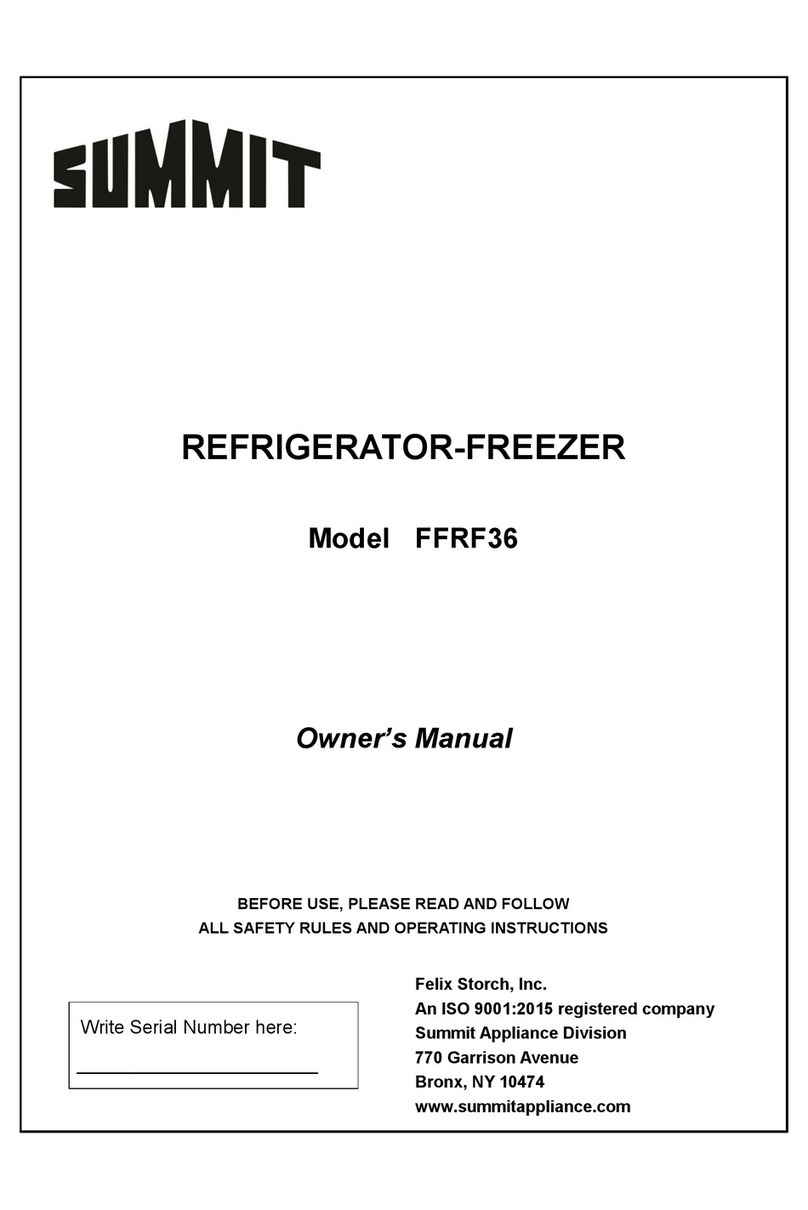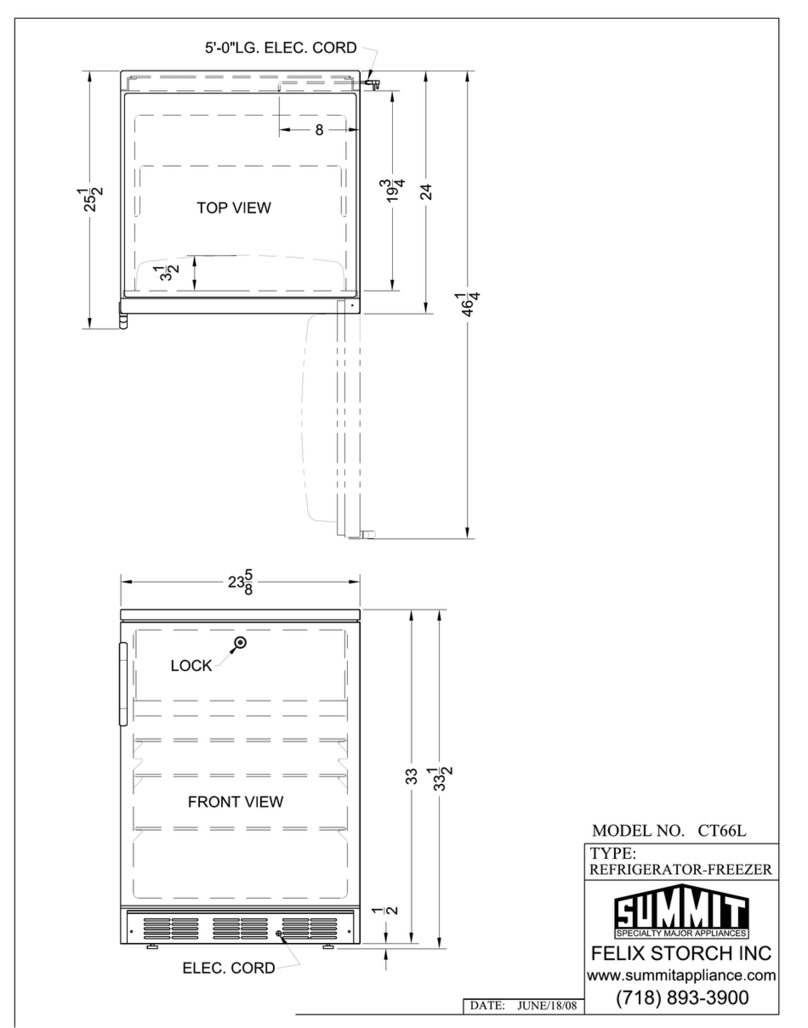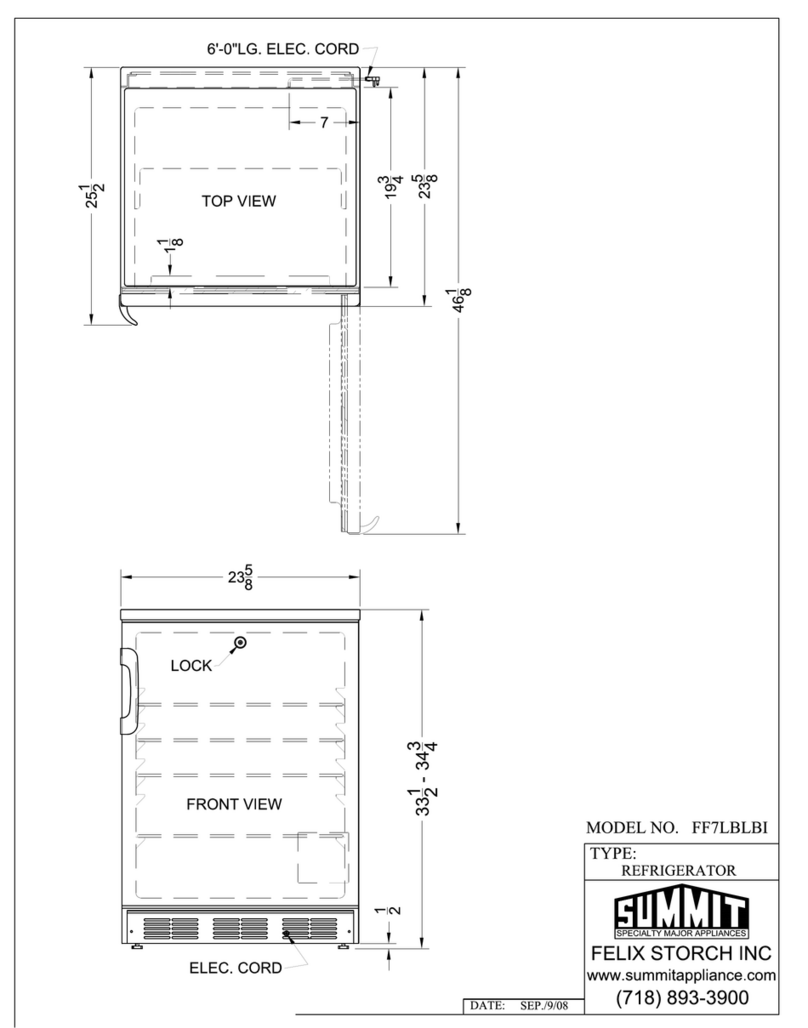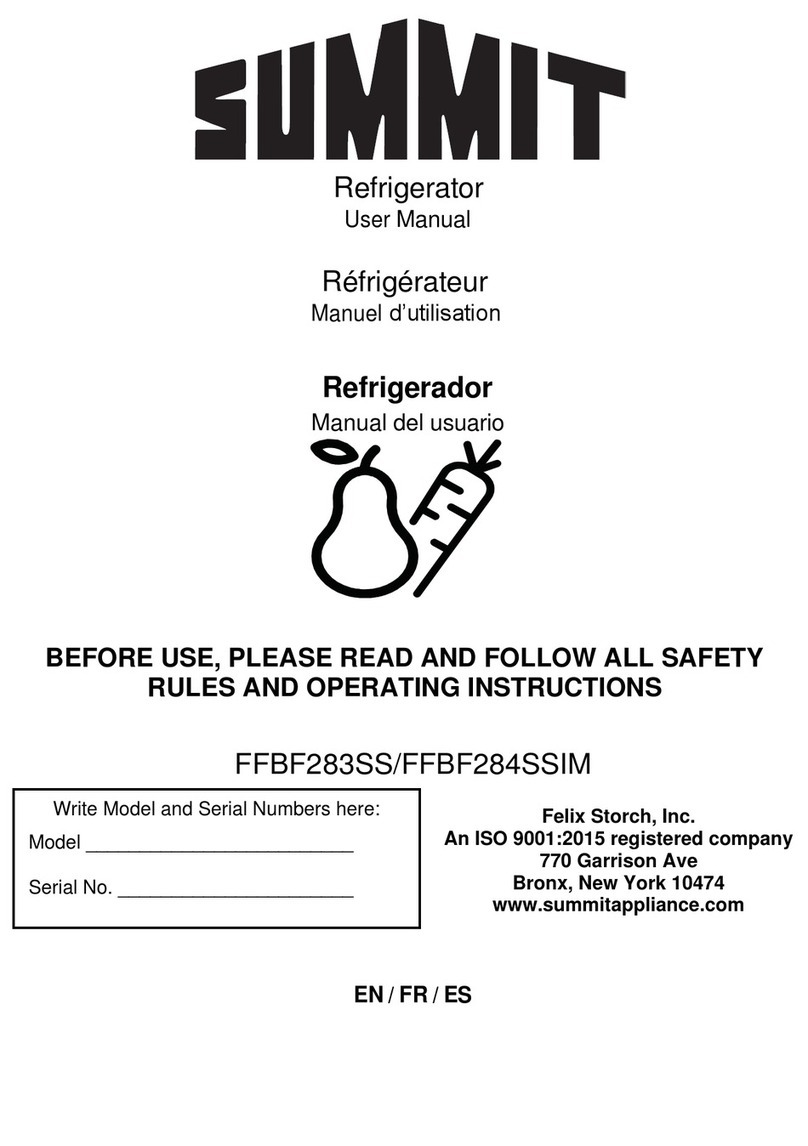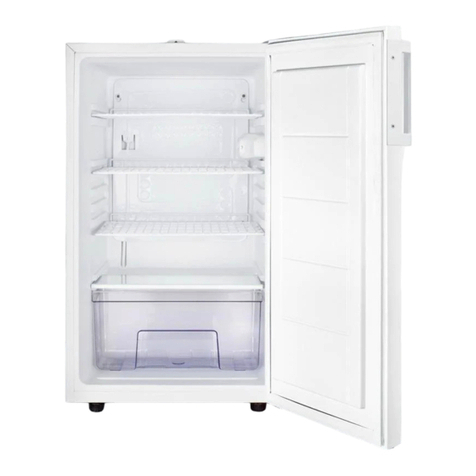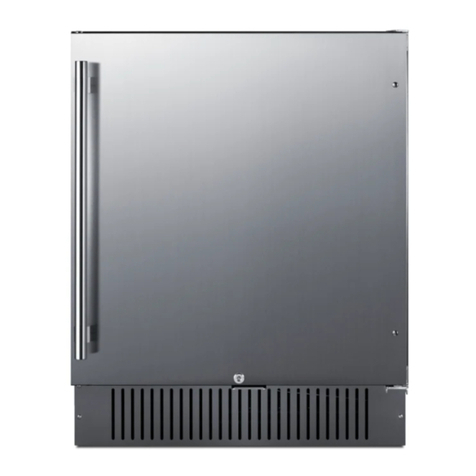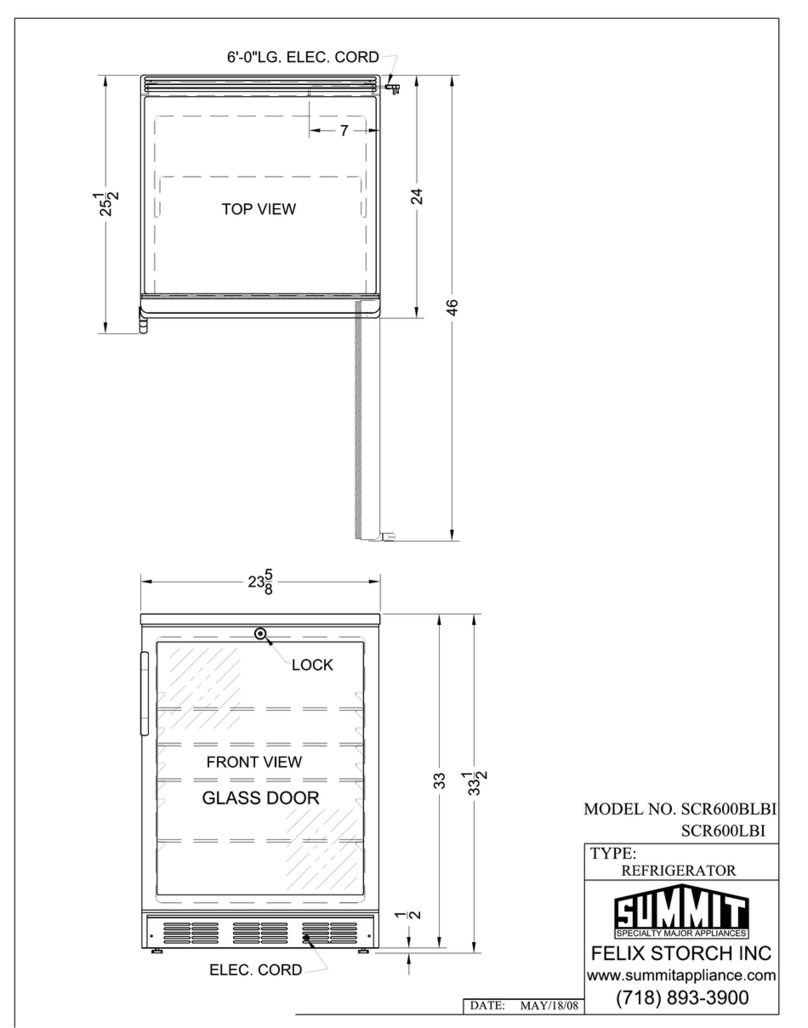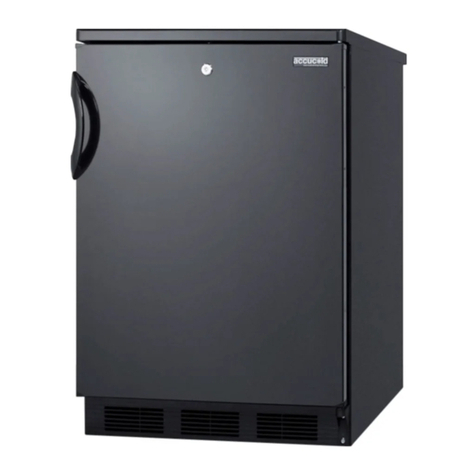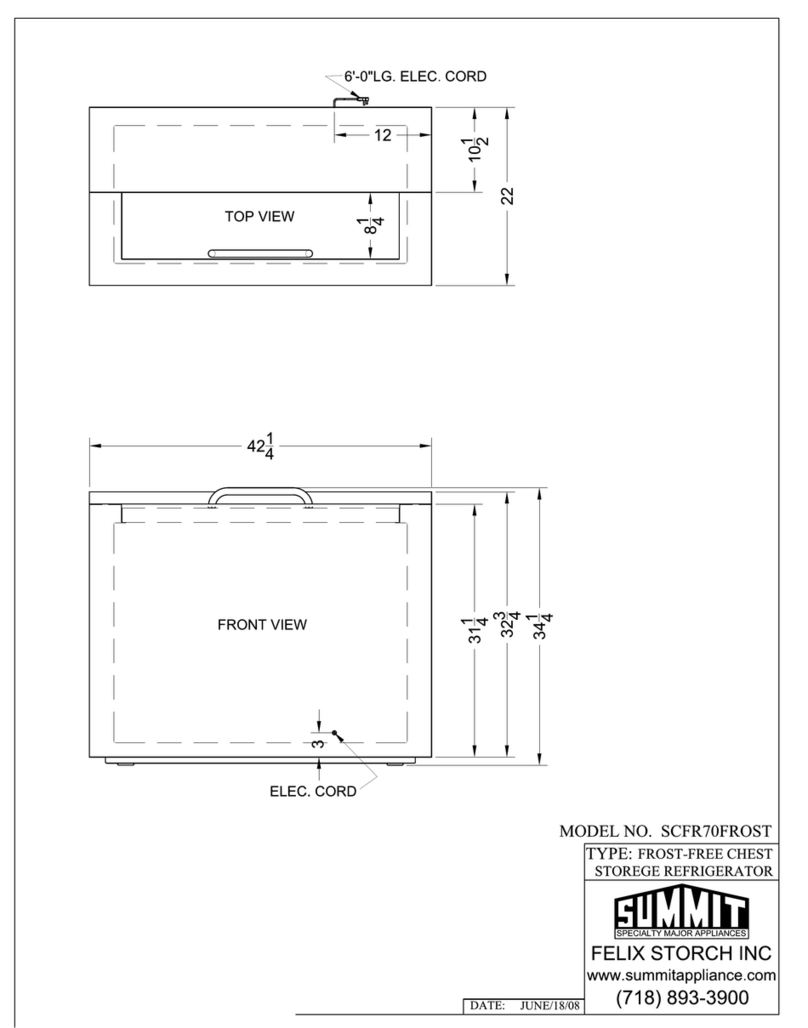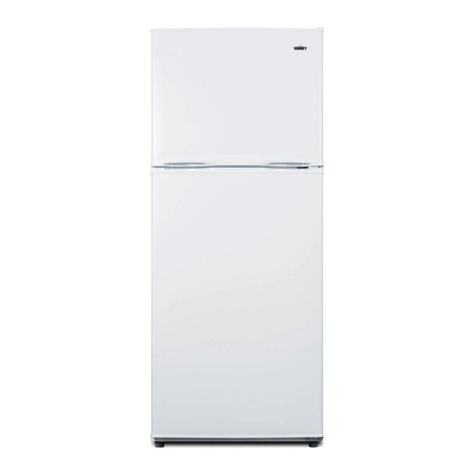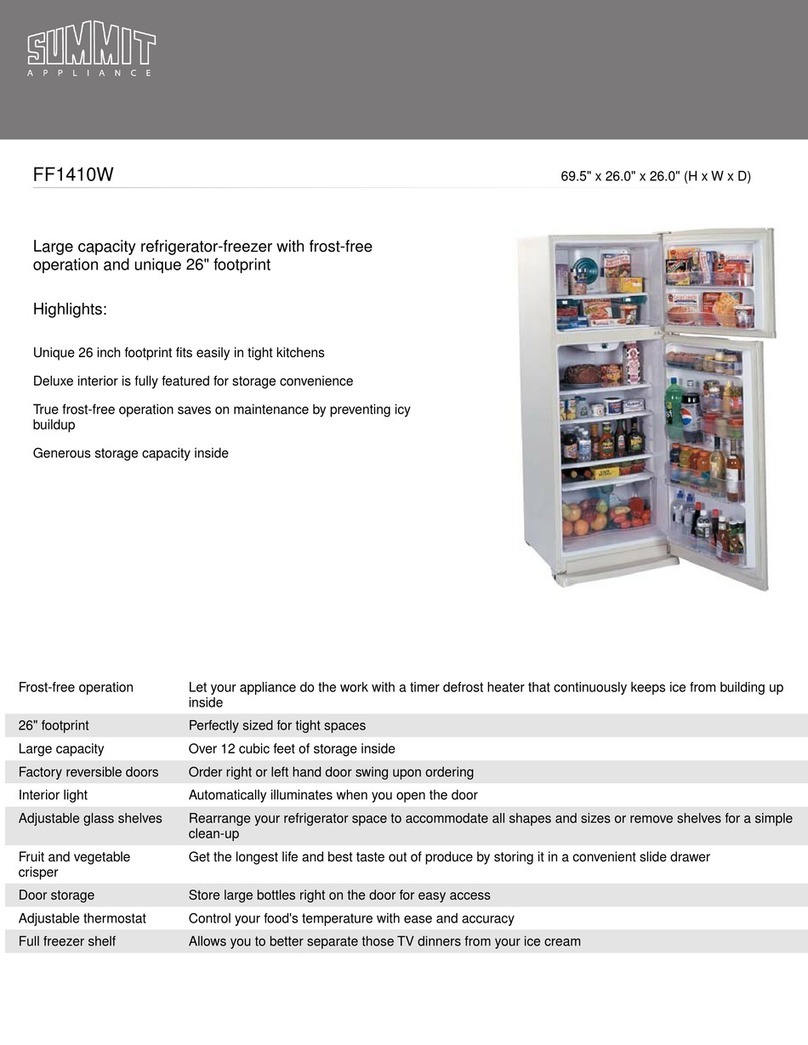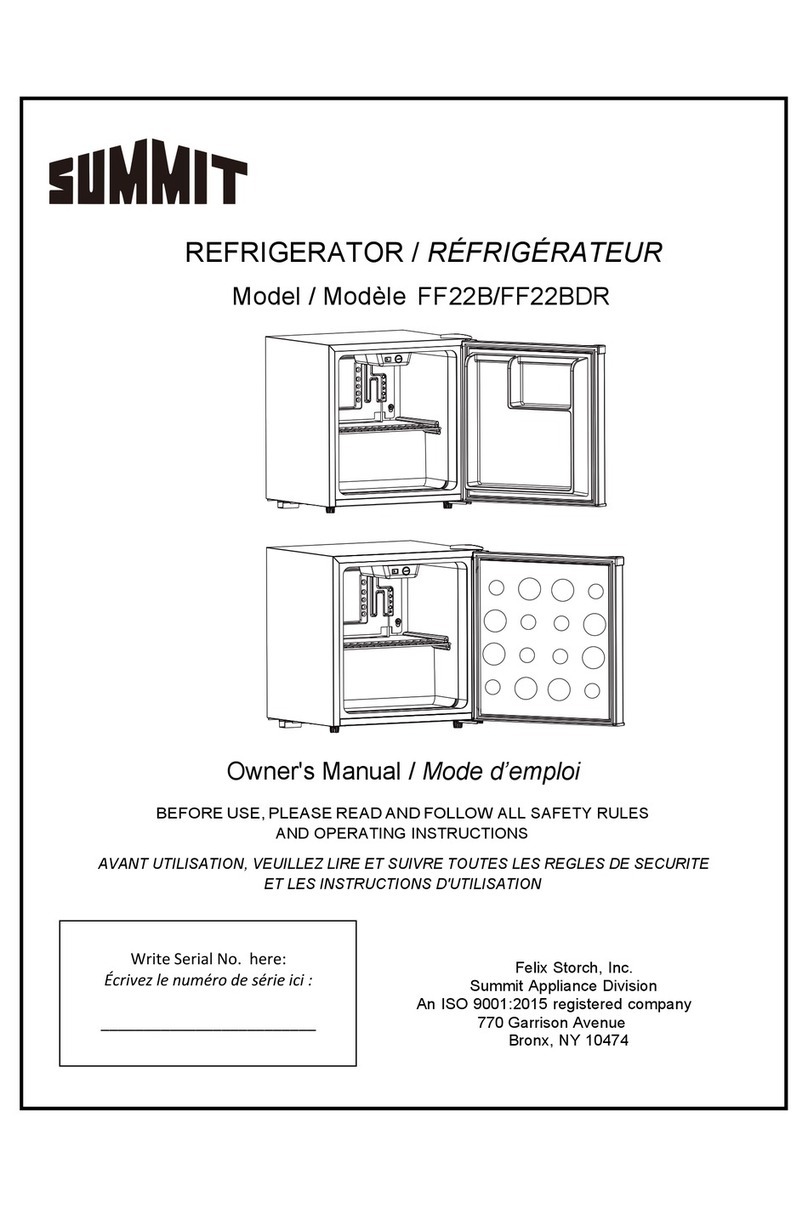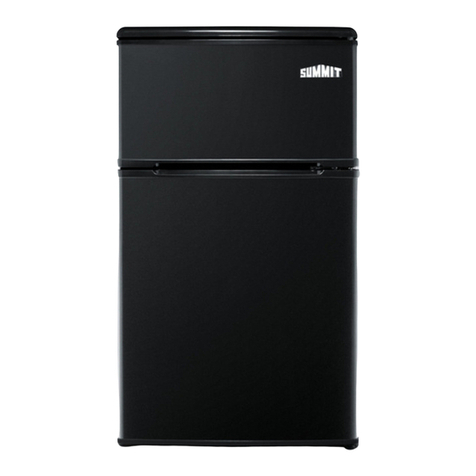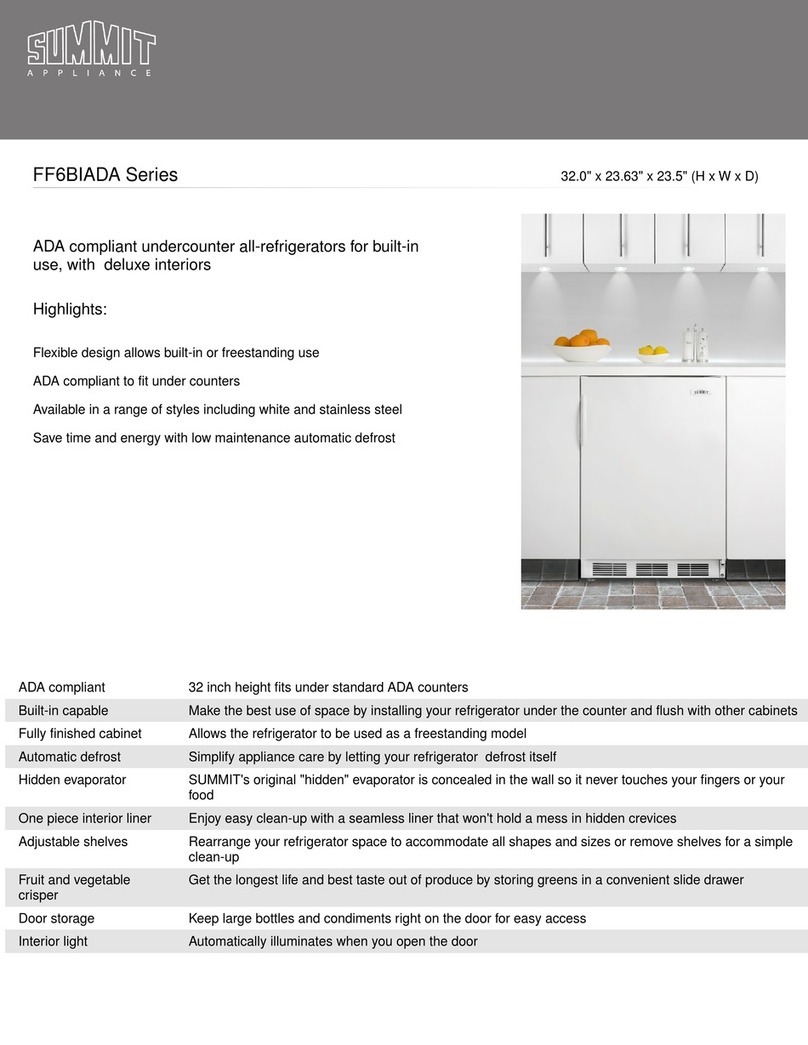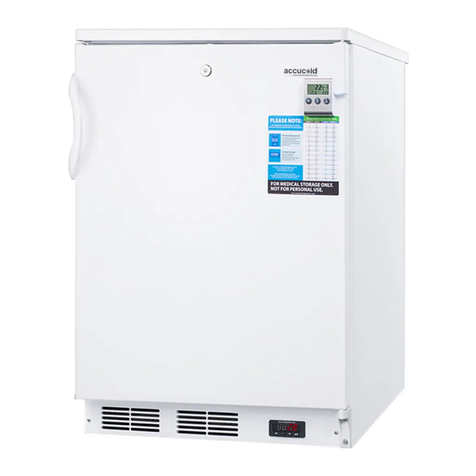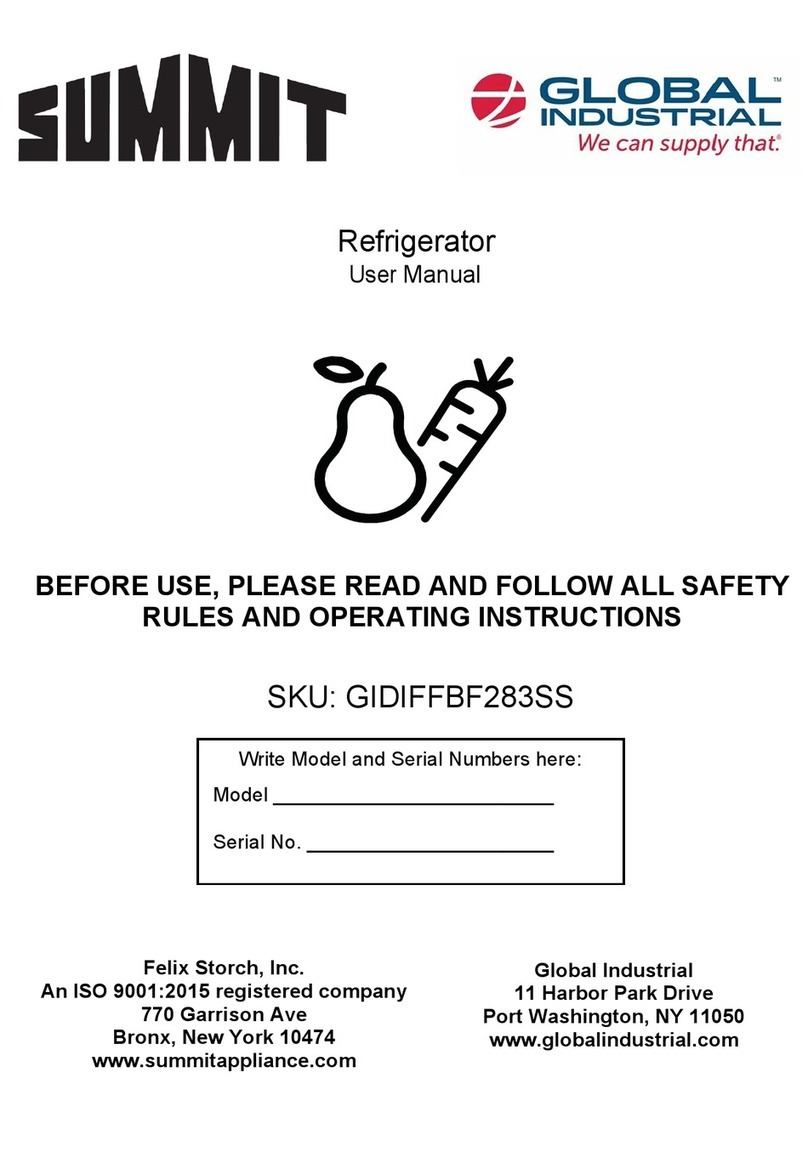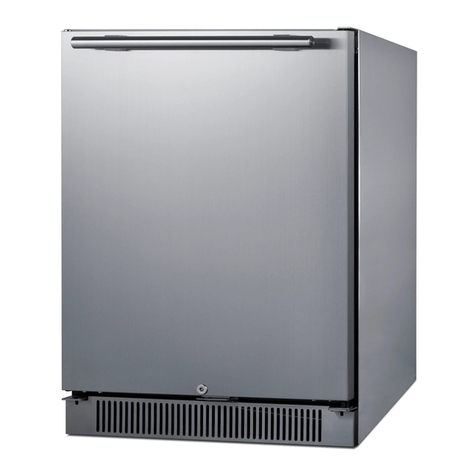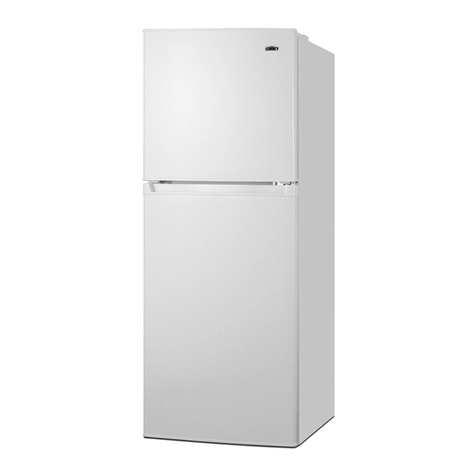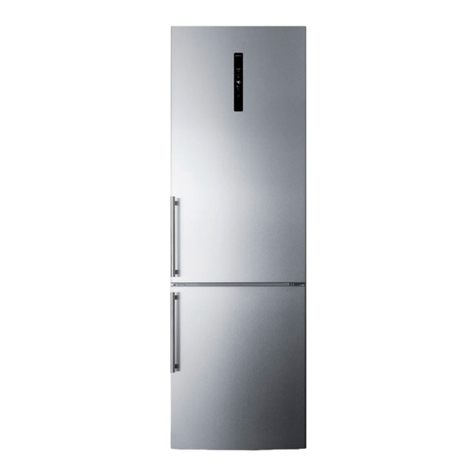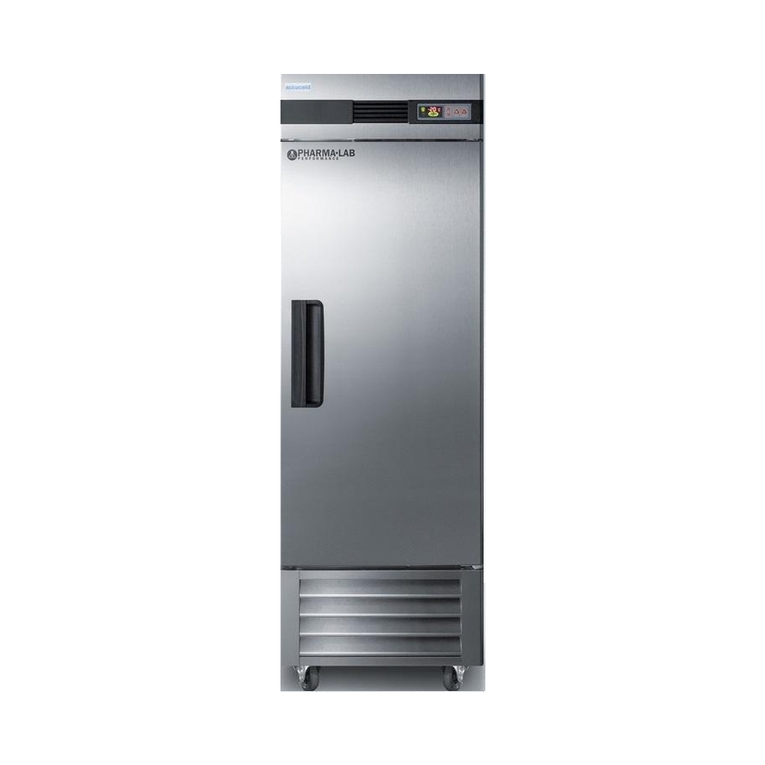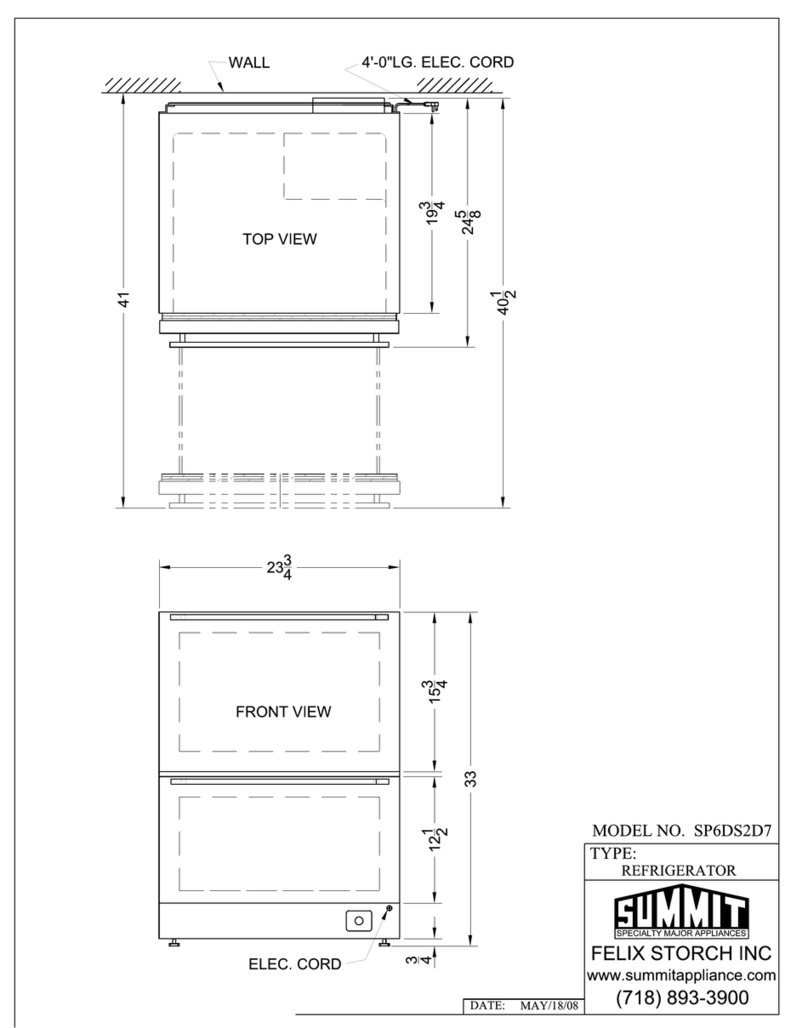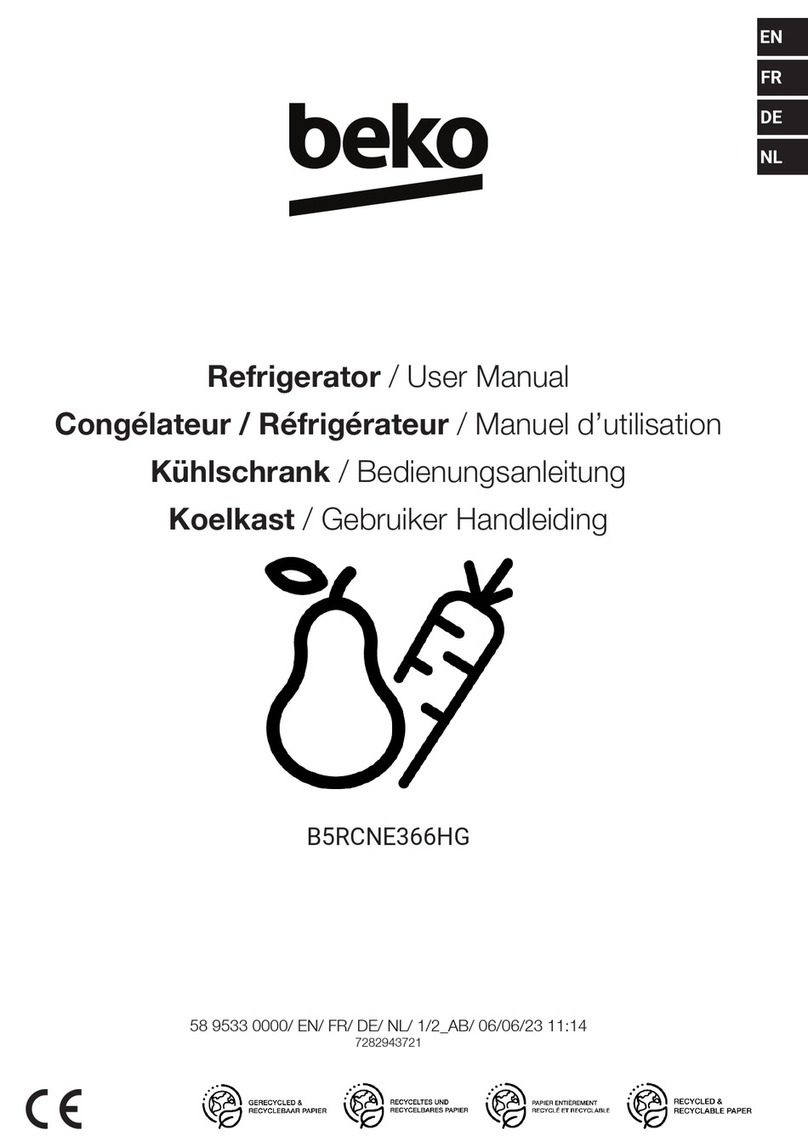
SAFETY PRECAUTIONS
WARNING: Read all of the instructions before using this appliance.
When using this appliance, always exercise basic safety
precautions, including the following:
NOTE: If the refrigerator/freezer has been placed in a horizontal or
tilted position for any period of time wait 24 hours before
plugging the unit in.
1) Use this appliance only for its intended purpose as described in this use
and care guide.
2) This refrigerator/freezer must be properly installed in accordance with
the installation instructions before it is used. See grounding instructions
in the installation section.
3) This refrigerator/freezer should not be recessed or built-in an enclosed
cabinet. It is designed for freestanding installation only.
4) Never unplug your refrigerator/freezer by pulling on the power cord.
Always grasp the plug firmly and pull straight out from the outlet.
5) DANGER - Risk of Fire or Explosion. Flammable refrigerant used. Do
not use Mechanical devices to defrost refrigerator. Do not puncture
refrigerant tubing.
6) If your old refrigerator/freezer is not being used, we recommend that
you remove the doors. This will reduce the possibility of danger to
children.
7)
WARNING: After your refrigerator/freezer is in operation, do not
touch the cold surfaces in the freezer compartment,
particularly when hands are damp or wet. Skin may
adhere to these extremely cold surfaces.
8) Do not refreeze foods, which have been thawed completely. The United
States Department of Agriculture in Home and Garden Bulletin No. 69
reads: "…You may safely refreeze frozen foods that have thawed if
they still contain ice crystals or if they are still cold-below 40°F".
"…Thawed ground meats, poultry, or fish that have any off-odor or
offcolor should not be refrozen and should not be eaten. Thawed ice
cream should be discarded. If the odor or color of any food is poor or
questionable, discard it. The food may be dangerous to eat."
1
